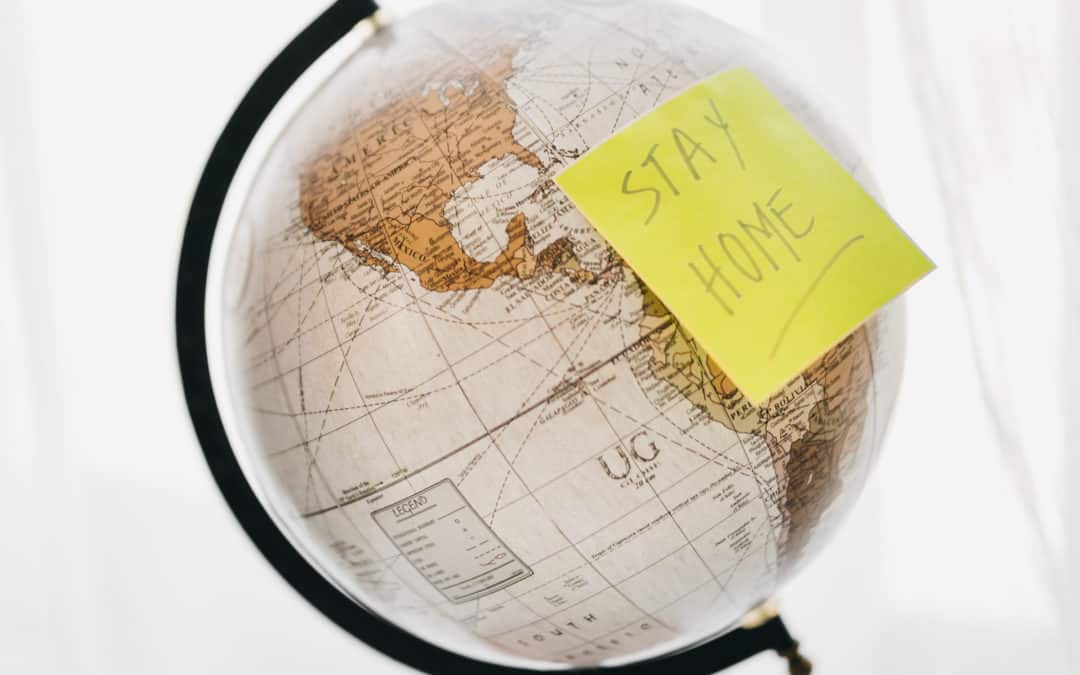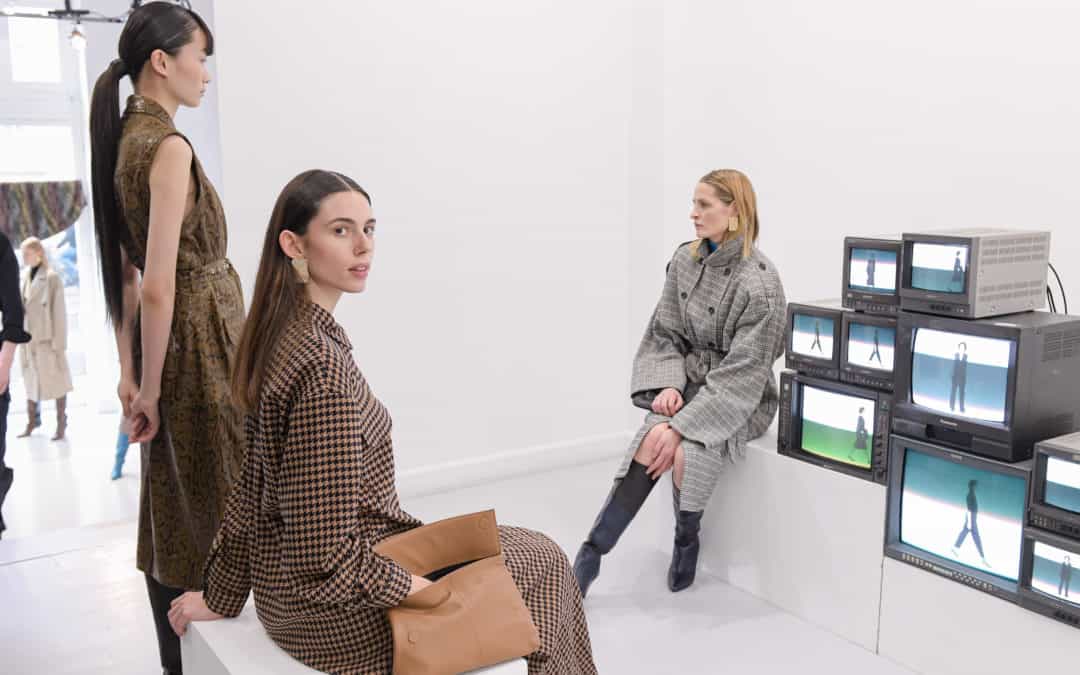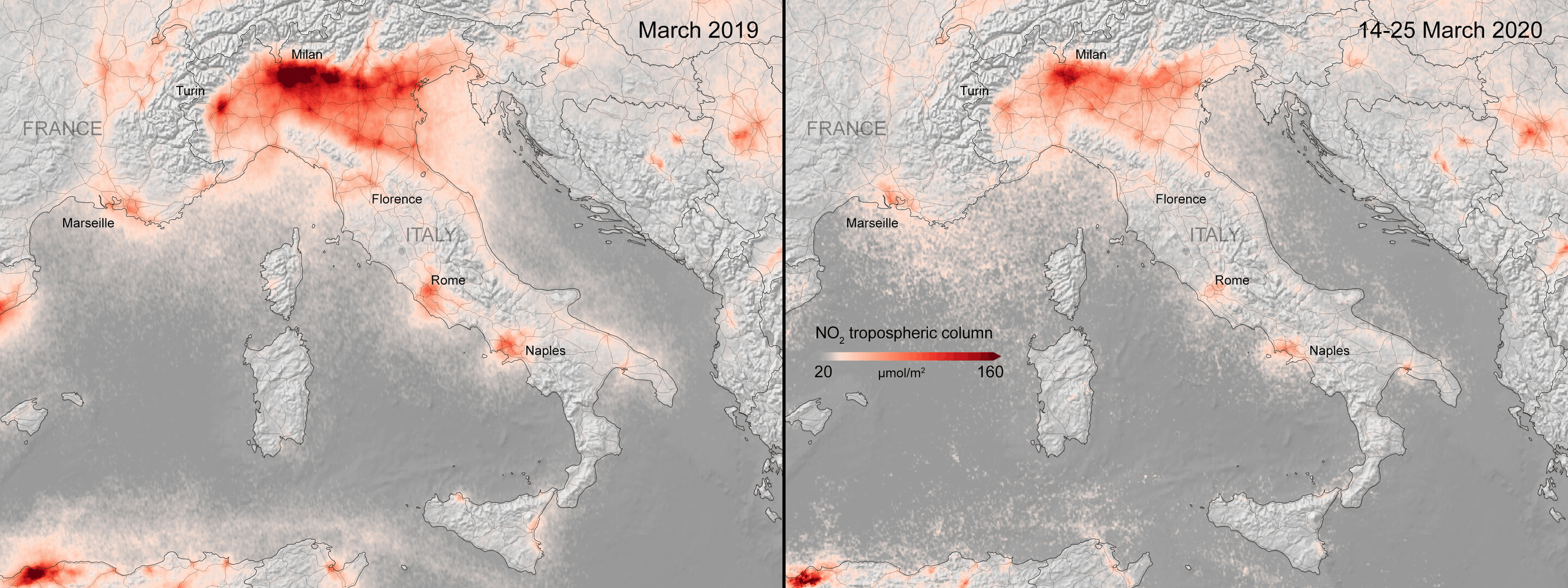Fashion is a unique art form. Every day we choose how we express ourselves creatively and morally to the world through the outfits that we wear and the brands that we choose to spend our money on. Culturally speaking, immense credibility can be given to brands and...

Update – Lockdown status in Scandinavia, Europe and the US
Update – Lockdown status in Scandinavia, Europe and the US
The Lifestyle Team at VOCAST is made up of native researchers, with specific knowledge about what is happening across international markets. In the current situation with COVID-19, different countries are taking different precautions. As each country struggles in various ways, it might be beneficial to focus on markets that are more open. Here is an update on the lockdown status of our 10 markets.
The latest updates as of 03/08/2020 are underlined and in bold:
Fashion Weeks/Fairs status in 2020:
Copenhagen Fashion Week has been pushed forward by a few days and is set to be held from the 9th to 12th of August in a hybrid format, meaning that some shows are running as usual (physically on the catwalk). However, some brands prefer to create a digital show presentation that will be prepared beforehand. This will allow them to be agile no matter what happens. Fashion trade fairs are scheduled to be held during the same days. Initially scheduled in May, Denmark’s annual design event, 3 days of design, has been postponed and will be taking place from the 3rd to 5th of September.
Paris Fashion Week Haute Couture and Homme was held from the 6th to 13th of July and was digital. However, Paris Fashion Week Womenswear (from the 28th of September to the 6th of October) will be presented in a hybrid form and will have both physical and digital shows. In September, both Première Vision (4th – 7th) and Who’s Next (15th – 17th) fashion fairs will take place as usual, Maison&Objet will be a digital fair (4th – 8th).
Milan Fashion Week was held from July 14th to 17th, the first “hybrid” digital fashion week featuring both men’s and women’s pre-collections for Spring Summer 21. For the September fashion week, the women’s and men’s agenda have also merged to the same week and will take place in September (22th – 28th) featuring the Spring-Summer collections of 2021. The 2020 edition of Salone del mobile has been canceled and the next edition will take place in April 2021 (13th – 18th). Pitti Immagine Uomo has announced that this year’s trade show will be done digitally, launching a new platform and format called Pitti Connect. The calendar has been moved and compressed into two days of digital activities taking place in September 2020 (2nd – 4th).
London Fashion Week took place in June, and it was the first major fashion week to present digitally. What should have been London Men’s Fashion Week became a digital platform on London Fashion Week’s website, showcasing fashion for all genders. Virtual showrooms, films, podcasts, and playlists were used to showcase British fashion along with the new hashtag #LFWreset. London Fashion Week is scheduled to continue digitally in September.
Stockholm Fashion Week is making a return via a digital platform from the 25th to the 27th of August. The new fashion week embraces a 360-degree format, setting the stage for SS21 presentations and shows, live-stream Q&A sessions with designers, interviews and panel discussions, wholesale showrooms, consumer activities focusing on the current season’s collections, and much more.
Berlin Fashion Week and most major fashion and design fairs have been postponed to 2021.
As of now, no official announcement has been made for New York Fashion Week.
Scandinavia
Denmark:
Lockdown status: Denmark has, since mid-April, been opening up parts of the country gradually. This has now resulted in the country almost being back to normal. Private offices, retail stores, restaurants and education and cultural institutions are all open. Gatherings are currently limited to 100 people, but are likely to be increased to 200 people shortly if infection rates are controlled. Due to the increase in infection globally, Denmark is now recommending all passengers on public transportation to wear masks.
Retail status: All non-essential stores, department stores, and shopping malls are opened again. Distance limitation is mandatory to ensure social distancing between customers, and dispensers with hand sanitizer are placed at all entrances.
Sweden:
Lockdown status: With an increasing curve of infected cases, Swedes have been blocked to travel abroad by many different countries. Even to its Scandinavian neighbors, Denmark and Norway who are welcome to visit Sweden. On July 1st, the border opened up for 15 non-EU countries, and from July 15th Swedes were welcome to travel to some countries within Europe, but the Foreign Ministry’s advice against travel from Sweden still remains until August 31st. Five months after most of the world lock-downed, Sweden is still doing business as usual. However, some restrictions are still put in place: offices are still encouraged to work from home and a limit of 50 people is allowed at social gatherings. This means that weddings, graduation parties, and events are asked to keep this restriction in mind. The increasing curve is taking place in some parts of the country, specifically in Stockholm and the West coast.
Press status: When reaching out to Swedish contacts think about mentioning the good weather and the possibilities for a relaxing staycation in their own country. Be friendly and not irritated over the fact that the Swedish government has not put any further restrictions in place. Grab ahold of the opportunity that journalists are on their emails and phones much more than before, excited for new collaboration opportunities. Focus on products and messages that can work in a local, home, and outdoor context with Scandinavian summer in mind.
Retail status: Retail is rolling with early seasonal sales, but it is struggling to keep numbers green, and employees are continuously furloughed. Opening hours for shops are slowly going back to normal.
Norway:
Lockdown status: The summer is coming to an end in Norway and life is slowly but surely returning to the new, post COVID-19 normal. Public gatherings are allowed up to 200 people meaning that bars, stores, and other businesses have for the most part opened up again. In terms of leisurely travel, Norway have greatly eased up the travel restrictions and it is now possible to travel to most of Europe without risking quarantine upon return. Still, it is advised to not travel unnecessarily and many have chosen to spend their free time exploring their home country.
Press status: Press contacts and influencers are slowly but surely moving back into business as usual. However, July is the main vacation month in Norway and that includes most press.
Retail status: Even at the most crucial point of the pandemic, large malls were allowed to stay open granted they could maintain a distance between customers and employees. Despite this, most stores saw a decrease in sales of anywhere between 30 – 100%. According to several industry experts, this has laid the foundation of the most dramatic discount-summer ever as most stores have products in stock that they had expected to sell during the crucial springtime months. We are still in the beginning phase of this, but across the nation there seems to be optimism lurking as well as a newfound enthusiasm for supporting local stores and brands.
Europe
Germany:
Lockdown status: The contact restrictions in Germany have been slightly lifted. However, every state is still responsible for the implementation of federal regulations, which can slightly differ from each other. In some smaller regions, the infection rate has increased and local lockdowns have been implemented again. Hygienic regulations, such as a 1.5 meters distance and wearing a mask in public areas, still apply in all states. Germany has opened its borders. However, since July 27th, a new rule has been in forced that all travelers returning from risk areas will have to be tested. Around 130 countries are currently on the risk list worldwide – these include the US, Egypt, Israel, Turkey, as well as Luxembourg and Ukraine. Furthermore, to break the chain of infection faster, the federal government of Germany has developed a free corona alarm app. The idea is to determine if someone has been in contact with an infected person and whether this can result in a risk of infection.
Press status: Journalists and editors are still in short-term employment, out of the office, or on vacations. This means that people in the industry work fewer hours or are not working at all right now. However, all editorial offices are still reachable. The best way to contact editors is by sending them an email. In general, employees at big publishing houses, such as Gruner + Jahr, Burda, Condé Nast, and Axel Springer, still work from home. Photoshoots and magazine productions in studios are still ongoing – by following the official regulations. Even-though most offices and teams are slowly starting to come back to their office, the coronavirus pandemic has become a wake-up call for digitization in Germany, as many weaknesses in the digital solution of companies, schools and universities were revealed.
Retail status: Valid from the 1st of July until the end of this year, the German government has decided to decrease the VAT on products and goods from the usual 19% to 16%. The goal is to increase sales and boost the German economy, which has been hit by the pandemic in the last months. Since May, all shops and retail stores have been open. However, hygienic requirements must be followed. Access to the shop must be controlled, queues avoided and a maximum number of people (customers and staff) must be specified in the area. Contactless payments have massively increased in German stores.
France:
Lockdown status: As of July 20th, anyone 11 years of age and over must wear a mask in enclosed public places, anyone going against this rule will be fined €135. The French can freely travel again throughout the country, without distance limitations or carrying an authorization form. The Paris region (Île de France) is no longer in the red, but green zone. However, gatherings of more than 10 people are still prohibited, and wearing a mask in public transport is still mandatory. Starting on the 1st of July, tourists from Schengen area countries including the UK are allowed to enter France. Long-term residents from 14 non-EU countries: Algeria, Australia, Canada, Georgia, Japan, Montenegro, Morocco, New Zealand, Rwanda, Serbia, South Korea, Thailand, Tunisia, and Uruguay, are allowed to travel to France too. People coming from a high-risk country will need to quarantine for 14 days. With talks of a second wave, lockdowns measures are soon going to be discussed by the French government.
Press status: Receptionists in most publishing houses are picking up the phone, however, some journalists and editors are still working from home. Reaching out by e-mail is still preferable though their responding time may vary. Influencers on the other hand are still very responsive. Please keep in mind that the French holiday period is during August.
Retail status: The French government highly recommends online shopping as an alternative. Wearing a mask is now mandatory upon entry into stores and hand sanitizer dispensers are still made available at each entrance. Outdoor markets and covered halls are open again – unless the regional prefectures decide otherwise, it is, therefore, important to check each prefectures’ website for more information. Big shopping centers larger than 70.000 m2 such as Le Printemps and Galeries Lafayette were authorized to open again in Paris. Summer sales have started (July 15th) with deceiving numbers. L’Alliance du Commerce (department stores, fashion/ footwear brands alliance), reported a 38% drop in store visits compared to the start of the 2019 sales. The Covid-19 crisis has pushed retailers to demand the cancellation of rents for the duration of the lockdown, and rents to be adjusted until return to normal.
Italy:
Lockdown status: In Italy, the official state of emergency has been prolonged by the government until October 15th. This is because although the death rate and infections have decreased drastically, the virus is still circulating and many fear the second waves that have started to affect other parts of Europe. Domestic travels have been allowed since June 2nd and the borders have been opened for the EU and other European countries. Italians and foreigners are free to enter and travel, and body temperatures are measured by the borders and at airports. Public transport is open and allowed whilst practicing social distance. Masks are still mandatory once you step outside your house. Public offices are open, with restrictions involving distance, masks, and sanitary supplies. Other offices, however, need to be able to fulfill the same measurements as public ones to be kept open. Offices are therefore still partly closed but some are starting to regain normal pace. In general, Italians are increasingly positive in spirit and many are looking forward to their -domestic- vacations in August.
Press status: Publishing houses are still closed in general, and only a handful of editors have started to work from the office a couple of times a week. Journalists are not answering their work phones but are still responding to emails. Influencers are still very responsive. When contacting the Italian press, keep in mind that many Italians still haven’t regained the pace of normal life and many have been personally affected by Covid-19 in different ways. Signs of solidarity in relation to the pandemic is generally highly appreciated, especially in business-related matters. Keep in mind that most Italians go on vacation in August and that one can expect delayed email response during this month.
Retail status: Shops, hairdressers, and bars have been open since May 18th and have, to a large extent, gone back to normal routines and opening hours.
The United Kingdom:
Lockdown status: The UK has been hard hit by Covid-19, with high rates of infection, fatality, and economic loss. All four nations are now beginning to open up workplaces, domestic travel restrictions, and social distancing guidelines though it is now mandatory to wear a face mask in most public indoor places. Since July, there have been a few second-wave-lockdowns in specific regions and cities in England. Since July 4th, nonessential businesses such as pubs and restaurants, theatres and cinemas, museums, and galleries were able to open up for the first time since lockdown began. Additionally, from July 10th international travelers from some countries no longer needed to self-quarantine for 14 days upon entering England. However, countries that have rising numbers of Covid-19 cases have been put back on the list of countries where UK residents must self-quarantine after visiting. As of August 1st, Spain and Luxembourg are the only countries to be put back onto that list.
Press status: Although offices and other workplaces are allowed to open, many workplaces continue to work from home if they cannot upkeep the safety policies in place. Although many in the British lifestyle industry are eggar to start getting back to work if possible, major publishing houses such as Hearst and Conde Nast still encourage all employees to work from home. Editors and journalists can be contacted via phone and email but prefer to be contacted via email in general.
Retail status: The majority of high street retailers are now open and are back in business. Depending on the size of the store, only a few people may be inside at once. Face masks are now mandatory in all stores and hand sanitizers are present in entrances and exits.
The Netherlands:
Lockdown status: Tourists from the EU, Schengen Area, and the UK are allowed to travel to the Netherlands. People arriving from Sweden and the UK are strongly advised to quarantine for 14 days during their Dutch stay. The Dutch are allowed to travel within Europe, but only to ‘yellow’ or safe countries. This list is continuously updated and can have countries turn to a negative orange code at any given moment. Only essential travel is allowed outside of Europe, upon return of such a trip, two weeks of quarantine are mandatory. A new rule allows people to apply for their loved ones from other countries to enter the Netherlands for a period of maximum 90 days. The maximum indoor capacity since July 1st is 100 people, without employees. Venues like cinemas, bars, restaurants, theatres, and events like weddings and burials are allowed more than 100 guests but only if attendance is notified in advance and health checks are possible. Outdoor capacity is at 250 people, though similarly it can be exceeded if attendance is noted beforehand for example, through restaurant reservations. All seats have been available on public transport since July 1st, but it is mandatory to wear a mask.
Press status: The government still advises people to work from home whenever possible and for workers to avoid public transport during rush hour. This means that some journalists are responsive and answering their emails while others are less available due to filled mailboxes.
Retail status: Non-essential stores and shopping malls are all open, which was already the case as The Netherlands hasn’t enforced any official lockdown. Social distancing measures of 1.5 m are still required to keep safety, but some professions where this isn’t feasible such as hairdressers are exempt from the rule.
Belgium:
Lockdown status: It is mandatory to wear a mask in indoor public places. Because of a rise in cases, the number of social contacts has been reduced again. Every household is allowed five close contacts and group activities are limited to 10 people. The private social bubble has been expanded to 15 different people per week. Everything has reopened except for nightclubs and mass events like festivals, bigger sport, cultural or ceremonial events. As of August 1st, a maximum of 400 people indoors and 800 outdoors. People are free to travel to Belgium but need to wear a mask when using public transport. Travel abroad is permitted, but strongly discouraged. Belgium has opened its borders to all EU countries and the UK, Switzerland, Liechtenstein, Iceland, and Norway. People returning or entering from countries marked red are tested upon return and quarantined for two weeks. The colour-coded map is updated every day on the Belgian website for Foreign Affairs.
Press status: Working from home is strongly encouraged again. Keeping a social distance of 1.5 meters is required between colleagues if working remotely is not an option. Most journalists are still working from home, their response time may vary. However, influencers are still very quick to reply.
Retail status: Stores and markets are open again, following guidelines on how to do this safely. Wearing a mask and keeping 1.5m social distance is mandatory. A study by the Thomas More college and retail federation Comeos discussed on retaildetail.be notes that the pandemic has positively influenced the online shopping behavior of Belgians. Belgian consumers are said to be finally won over by e-commerce, but will also be shopping more in local stores. 30% of Belgians say they will continue shopping online in the future. 44% mentioned they consciously look for online shops of local retailers with a physical store in Belgium. 23% said they were planning on visiting the physical stores they had discovered online. 58% will avoid shopping in malls and 29% percent notes having a smaller shopping budget now. This market research was conducted with more than 3000 Belgians between 30th April and 10th May before the opening of non-essential stores.
America
The United States:
Lockdown status: The US has been badly affected by Covid-19, though the country never imposed a nation wide lockdown. Infection rates and unemployment rates are high nation wide. US residents can begin to travel internationally again, however, some countries are not permitting US residents entry. Anti-racist protests and natural disasters such as Tropical Storm Isaias and the California fires, are contributing to the difficulties that the US is currently facing when it come to the pandemic. The Black Lives Matter movement has been taking up form as protests across the US since the end of May. Nationwide protests are still ongoing and have taken place in all 50 states and has had effects on employees and businesses in the lifestyle industry. Due to the protests and looming natural disasters on top of the pandemic, it is important to be patient when in contact with individuals in the American market.
Press status: Industry professionals such as the press are reachable through email and sometimes on their personal phones, however, there can sometimes be delays due to teams working remotely. Different publishing houses have varying rules for their employees however, it is best to assume that employees are working from home.
Retail status: The US has not yet been in full countrywide lockdown, rather different states have imposed different lockdown rules and regulations for people and businesses to follow. The majority of the country is relatively open, but regulations are subject to change. This means few domestic travel restrictions, businesses deciding for themselves if their employees will work from home or not, and some retailers open on high streets.
What you should consider:
Now more than ever, understanding what all these different markets are going through is essential. Decisions have to be taken carefully in order to maintain good business relationships. Brands can re-think the way they communicate by being creative, cost-effective, and sensible during these uncertain times.
COVID-19 and the subsequent lockdowns had a very negative effect on retail, but have also opened up for more digital solutions for stores across all markets as we are seeing a boom in e-commerce. When it comes to reaching out to the press, rather focus on markets like Denmark, Sweden, Norway, and expect a longer response time for journalists in markets like Germany, Belgium, and the Netherlands, as they still have limited access to their working space. Instead, reach out to influencers, as they are still responding really well even in markets that are badly affected like Italy and France.
The United States and The UK are amongst the countries that are the most affected by COVID-19 worldwide. For these two markets especially, it is very important to remain patient and follow new developments in order to communicate sensibly.

Ines is the French Fashion and Design Researcher at VOCAST. After spending most of her life on the beautiful African continent she has chosen Copenhagen as her home-base. A self proclaimed “beauty addict”, she previously worked in the beauty industry and is now exploring her passion for digital marketing, fashion PR and design.
SIGN UP TO OUR NEWSLETTER
Get free knowledge on how to optimize your B2B marketing & new product releases.
RELATED POSTS
Behind the curtains: the power of celebrities in the world of fashion
The power of mom influencers
Impactful, persuasive, and the ultimate go-to for advice of any kind. Let's talk about mom influencers and how they have conquered the social media world. Mom influencers have really made a mark in the social media landscape. Their content is based on experiences and...
Why a digital showroom is important for design-driven brands: an editor’s perspective
At VOCAST we foresaw the rise in design-driven brands embracing digital tools, intensified by a global pandemic and an increasingly fragmented media landscape. Digitalization is now a crucial element to supply the right media channels and stakeholders in a fast-paced...























